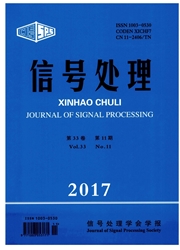

 中文摘要:
中文摘要:
本文提出了一种新的基于值域空间中类零子空间分析(CNSA)的模式判别方法。CNSA方法首先获取全体训练样本的值域空间,然后在值域空间中定义了各个子类的类零子空间(CNS)及其正交补空间。类零子空间及其正交补空间上都含有有效判别信息。CNS上的类内距离为零,第i类的样本到其中心的相对距离远小于到其他类的中心的距离。在对值域空间和新的CNS的性质进行分析的基础上,构造到各个类的特征空间的投影矩阵。通过计算待测样本到各特征子空间的距离,CNSA算法不但能够对属于已知模式的样本作分类判决,还能发现新模式类。在太赫兹时域光谱数据集和COIL100数据库上,将提出的CNSA算法与相关算法进行了实验比较,实验结果验证了本文CNSA算法的优越性。
 英文摘要:
英文摘要:
This paper proposes a noval pattern discriminant method named class null subspace analysis of a range space (CNSA). CNSA obtains the range space of all available data. In the range space, the class null subspace (CNS) and the corresponding orthogonal complement of CNS for each class are defined. Both CNS and its corresponding orthogonal comple- ment contain valid discriminant information. Since the within-class distance is zero in CNS, the distance between a sample of class i and the ith center would be much smaller than the distance from other center. For each class a proper projection matrix is constructed in CNSA. Not only samples of know classes can be classified, but a new sample, which is not included in known classes, can also be found by computing the distance between the test sample and the class mean vectors of the class feature spaces. The experimental results on terahertz time-domain spectroscopy (THz-TDS) data and COIL100 database verify the superiority of CNSA.
 同期刊论文项目
同期刊论文项目
 同项目期刊论文
同项目期刊论文
 期刊信息
期刊信息
